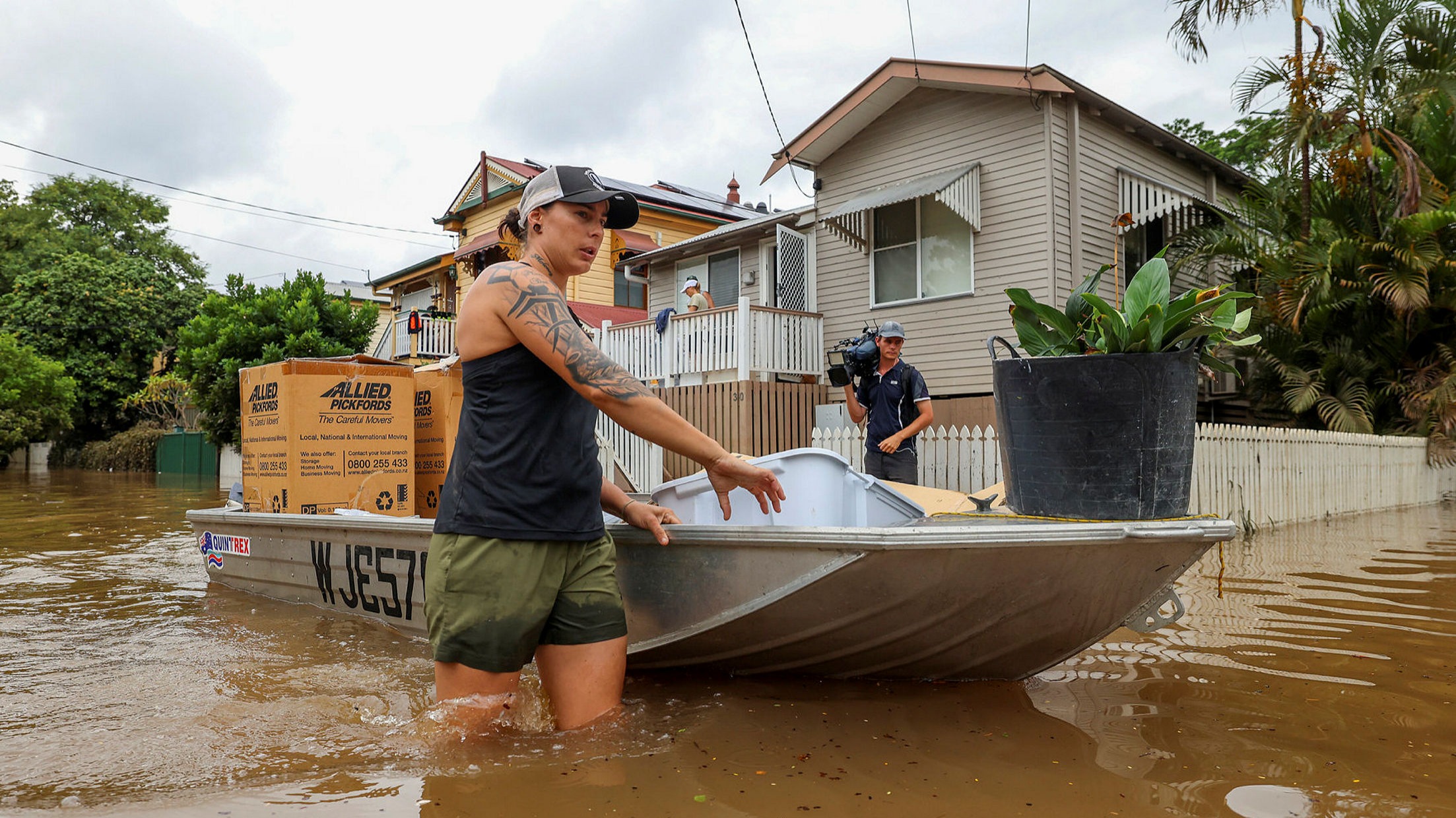
Brett Girard was in his lakeside caravan when freakishly heavy rain began falling on the Australian town of Lismore.
The 54-year-old’s instinct was to flee, but he and his friends were told to wait for help. Hours later water was filling up his caravan, and emergency services said it was now too dangerous to attempt a rescue. So he spent the most terrifying night of his life clinging to a pole on the side of a building at the caravan park, floodwaters swirling round his neck.
“The water come like you wouldn’t believe,” he said. “I was kicking cows off my pole [that were] trying to get over me and on to the roof. There were cows drowning everywhere.”
Now homeless and staying at an evacuation centre nearby, Girard felt he was “left for dead” by authorities who were unprepared for a disaster that experts said was entirely predictable.
The “rain bomb” that hit Lismore in New South Wales on February 28 was unprecedented. As much as 700mm of rain fell in 24 hours — more than London typically receives in a year. It caused the nearby Wilson river to rise 14.4 metres above its normal level, covering most of the town centre with water. Four people died.
A few weeks later, Lismore resembles a war zone. Piles of rubble and detritus line the streets. Army trucks patrol the area, bringing supplies and helping with the clean-up effort. Every shopfront reveals the same devastation: windows smashed, ceilings caved in and nothing salvageable.
Megan Cusack, a barrister whose chambers were filled almost to the ceiling with water, said she did not have contents insurance. “You can’t get insurance for floods here, unless you want to spend A$20,000 [US14,500] a year.” She estimated the damage at A$100,000.
Robin Gilmore, who owns the Civic Hotel, where floodwaters reached the second floor, estimated his losses at A$2.5mn. Local resident Max, 74, who had to be rescued from his front porch in waist-deep water, said he would have to raid his pension to pay for the damage. Neither had insurance.
Lismore is just one of countless communities, from Brisbane to Sydney, hit by extreme rainfall and flash flooding in late February and early March. The Insurance Council of Australia put the total claims at A$2.2bn and counting. That takes no account of the huge uninsured losses.
As with floods in Germany and New York last year, and wildfires from California and southern Australia to the Amazon, this latest record-breaking extreme weather event has prompted urgent discussions about climate change.
The Intergovernmental Panel on Climate Change’s latest report, released the same day the floods engulfed Lismore, states with “high confidence” that “recent heavy rainfall events that led to catastrophic flooding were made more likely by anthropogenic climate change”.
“What we’re seeing unfold is what we had long predicted,” said Mark Crosweller, the former head of the government’s National Resilience Taskforce. We are “witnessing the legacy of many, many years of insufficient decisions about where and how we’ve placed ourselves on the landscape”.
Geoff Summerhayes, former chief insurance regulator and now a senior adviser at climate change advisory Pollination, said: “We’re taking a backward view to catastrophes, but we know that with climate change the past is no longer a predictor of the future.”
He said insurance provided cover for “unlikely events”, but climate change meant many risks that were once considered unlikely were now likely, and therefore uninsurable.
Insurers have withdrawn from much of northern Australia, which is particularly vulnerable to cyclones, prompting the government last year to introduce its own A$10bn cyclone reinsurance pool. Similar government pools exist in the UK, US and Japan. “But all that means is the taxpayer is now the insurer,” Summerhayes said.
He said better building standards and planning rules, greater government spending on infrastructure projects such as levees, and improved emergency response would reduce much of the risk. But in some cases, he said, the best option may be permanent evacuation of areas, a policy known as “managed retreat”.
In 2011, Grantham, three hours’ drive inland from Lismore, was hit by floods that left 12 people dead. Shortly afterwards, the mayor organised a government-funded “land swap” that allowed locals to move to a plot of higher land nearby. A decade later, the new Grantham is a firmly established community of about 70 homes safely out of reach of the floods.
Mary McErlean, 70, who moved her entire house up the hill, said the managed retreat was a success. “It’s the best thing that they ever did, as far as I was concerned,” she added. “If they wouldn’t have done that, there could have been more lives lost. There would have been more destruction.”
Repeating the operation at a much larger town such as Lismore would be far harder. Doing it in the most heavily populated parts of the world — from Shanghai and Kolkata to Miami — that face becoming first uninsurable, then uninhabitable owing to climate change would be immeasurably more difficult again.
But Crosweller insisted managed retreat might be the only answer for many communities.
“These are very difficult questions for a community because people are very attached to a place,” he said. “It’s not an easy thing to contemplate, but it’s still a conversation we need to think about [having].”
Copyright The Financial Times Limited 2022







